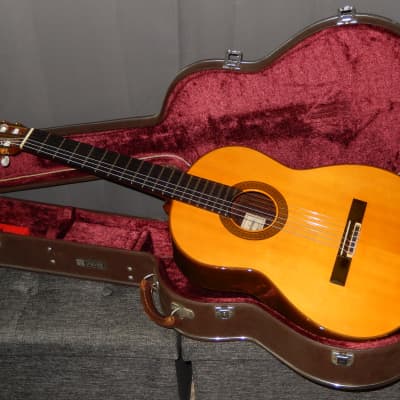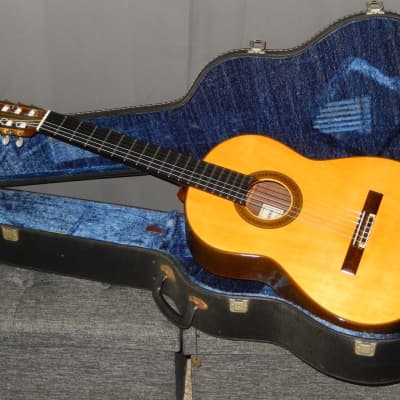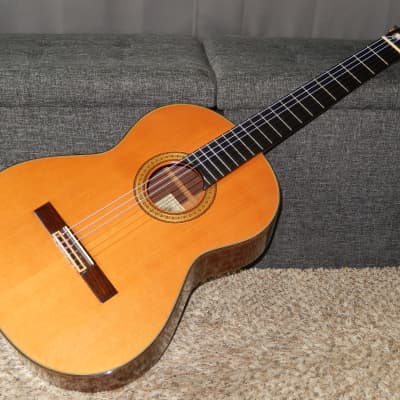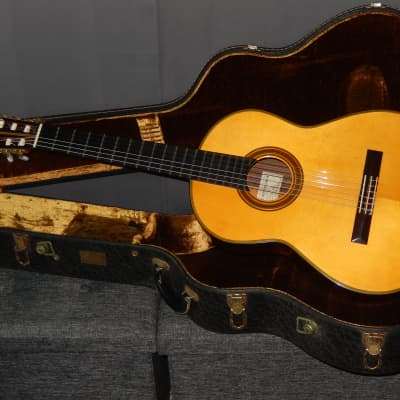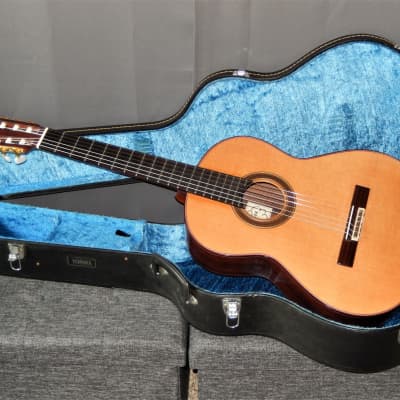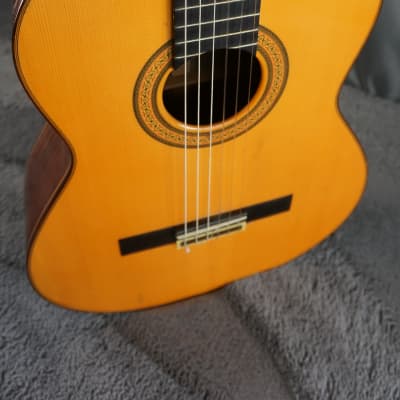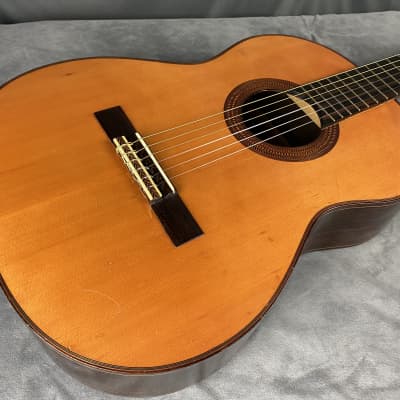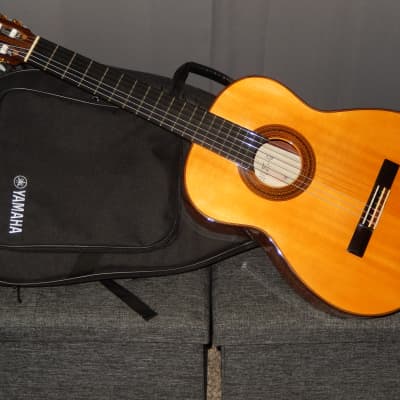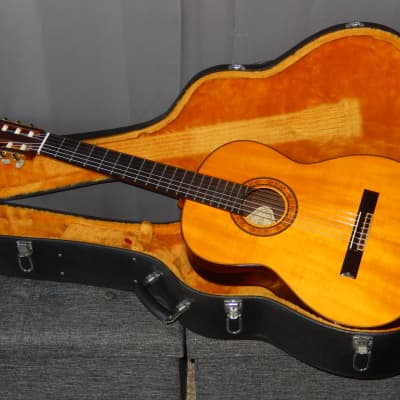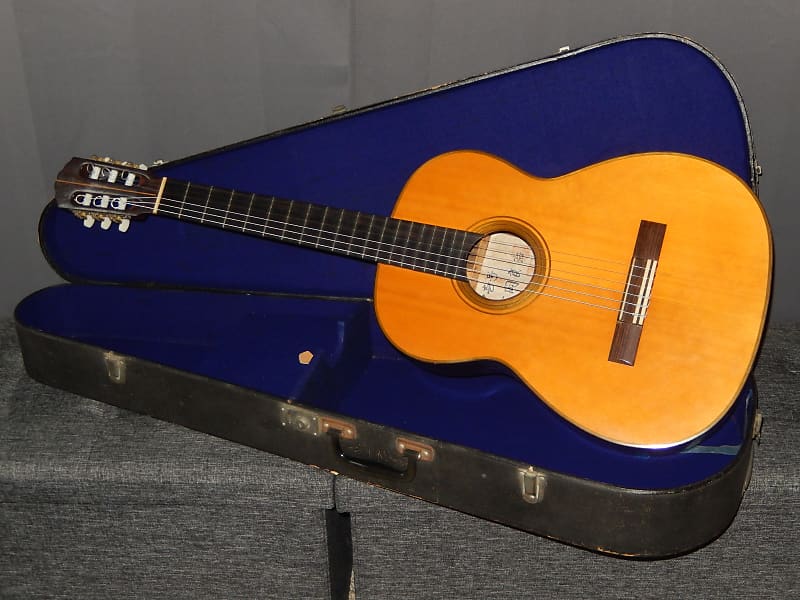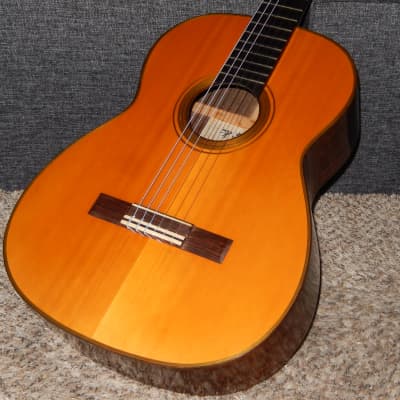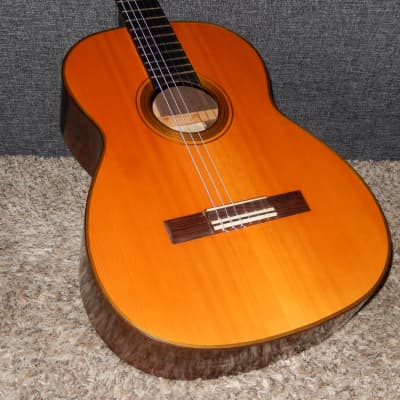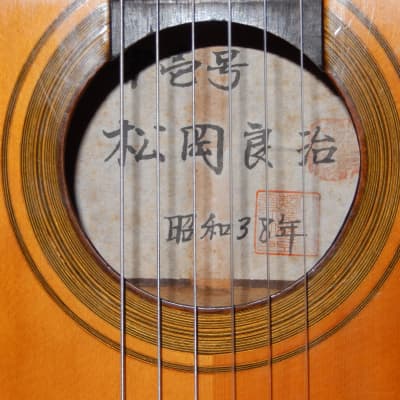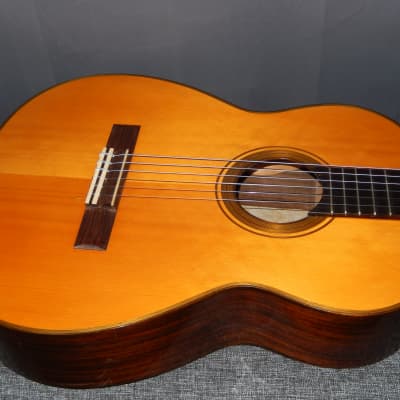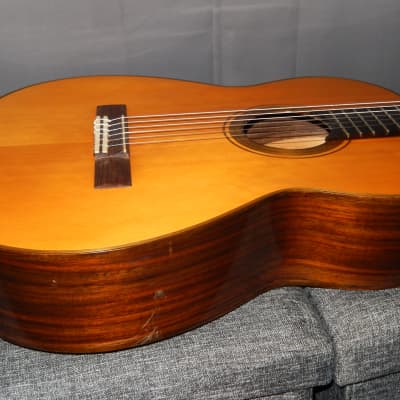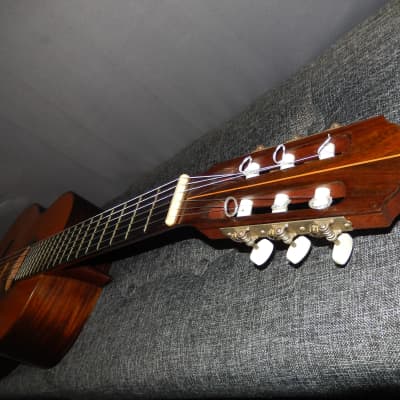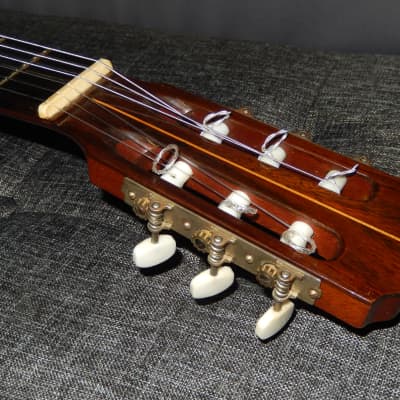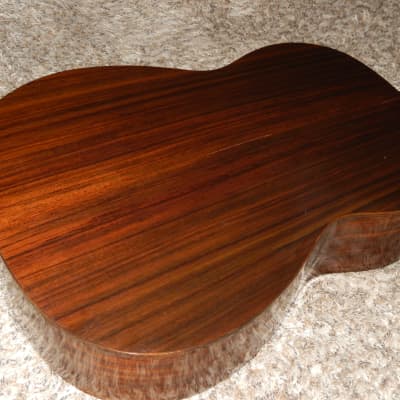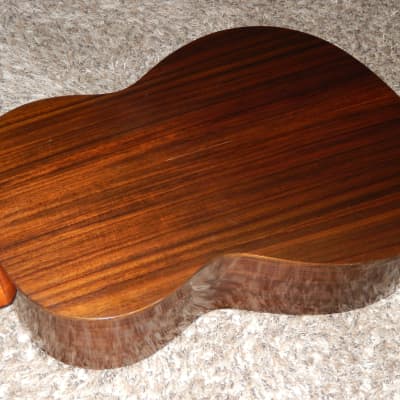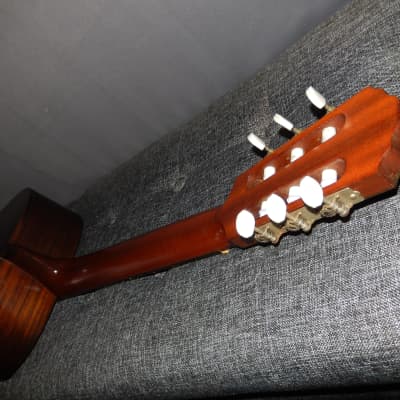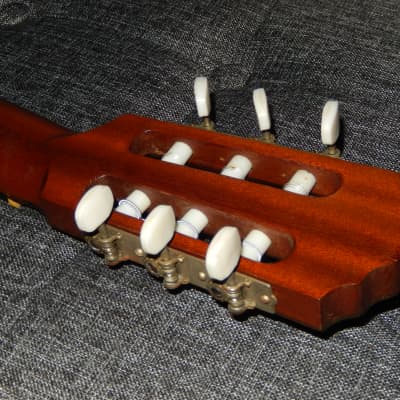Made in 1963 Ryoji Matsuoka Special No1 Classical Concert Guitar
Ryoji Matsuoka was one of the best known Japanese luthiers. His classical guitars are played all around the world. Through all the years of his professional career Ryoji's guitars offered exceptional value for the price. If compared to guitars made by other Japanese luthier's and Gakkis, Ryoji's guitars were clearly underpriced. It was Ryoji's business philosophy to deliver great instruments at prices affordable to less wealthy guitar enthusiasts. Even though since 1986 Ryoji's workshop was managed by his son Toshiaki, Ryoji's vision was still in place. It is quite likely that Ryoji's workshop wasn't profitable at the end of its existence. It might not be a coincidence that soon after Ryoji's death in September of 2014, his workshop was closed and production of "made in Japan" Matsuoka guitars ended. As of today, all brand-new Matsuoka guitars are made in China.
Guitar you are looking at was made by Ryoji in 1963 (38th year of Emperor’s Showa reign), when he was just an individual luthier making limited number of guitars. His guitars from that era are nearly impossible to find. This model was labeled as “Special No1”. I simply don’t know whether or not this was the top-of-the-line model.
The oldest Matsuoka’s guitar I have sold so far was No.20 made in 1964. It had rice-paper label written in English, with Ryoji’s hand signature in blue ink. This No20 guitar was made quite differently form the one you are looking at.
Judged by its looks, this Special No1 guitar is not much different from many other Japanese made guitars of that era. However, its construction is very unique, very likely based on very old blueprints coming from “non-Spanish” part of Europe. Its bracing is based on double x pattern. I have never seen such bracing before. I guess it can be described as “older version of lattice bracing”. The edge of the sound hole is protected by a rosewood ring, that seems to be made all by hand. Such feature was popular among makers of early XXth century. So were such very simple hand-made rosettes.
Similar in looks tuning machines with peg rollers spaced 32mm apart, were commonly in use until early 1960s.
This guitar is very loud and very responsive. Its power and tonal properties strongly resemble very old Spanish Concert guitars. Its immense volume is associated with somewhat subdued sustain, yet still great note clarity and separation. Basses are very deep, with great deal of overtones, yet also quite clean. Trebles are strong, round and clear. When chords are played guitar sounds quite worm and sweet. Yet while playing a solo, trebles appear very crispy.
Overall condition of this guitar can be described as “very good for its age”. Even though it bears 2 light string burns below the bridge, its top survived in truly excellent condition. Its back looks good too but one of its sides bears a cluster of dents/scratches. Yet guitar doesn’t have any cracks nor it shows signs of any repairs. Condition of the fingerboard and frets suggests that this guitar has been played relatively little over its life span.
Guitar is fully functional, easy to play and can be enjoyed by a devoted player for many years to come.
Specifications:
Top: High Grade Solid Spruce with double X bracing/ Rosewood ring protecting sound hole /thin coat of lacquer
Back and sides: Solid Rosewood/lacquer
Neck: Mahogany
Fingerboard: Brazilian Rosewood
Scale: 645 mm
Nut width: 51 mm
Current action is set to around 3.20 mm under E6 and 2.70 mm under E1 with still extra room on the saddle. The saddle has shallow grooves made for each string and seems to be originally made that way.
Guitar will be shipped in original case that is still usable but quite worn on the outside.
The key to understand value of vintage Japanese guitars is to acknowledge galloping price inflation (devaluation of Japanese yen) during 1960s & 1970s. This inflation slowed down in 1980s.
During 1960s and most of 1970s model numbers of Japanese guitars were strictly interconnected with their prices in Japanese yen. By early 1980s and during following decades model numbers were no longer strictly associated with their prices. Some Japanese guitar makers introduced model names instead of model numbers. Others were still using model numbers with addition of letters and/or other symbols.
It is then important to understand that two Yamaha GC10 guitars made 10 years apart are two instruments of totally different class. The same applies to any other Japanese maker/brand.
The logical way to estimate the true class of any given Japanese made instrument is to compare its price with the average annual salary of wage workers in Japanese private sectors. This salary was: 450 600 yen in 1965 - 825 900 yen in 1970 - 1 868 300 yen in 1975 - 2 689 000 yen in 1980 - 3 163 000 yen in 1985 - 3 761 000 yen in 1990 - 4 107 000 yen in 1995 - 4 082 000 yen in 2000.
Any guitar priced 100 000 yen in 1970 (labelled as No10 or No100) would be priced 200 000 yen in 1975 (relabeled to No20, No200 or 2000), 300 000 yen in 1977 (labelled as No3, No30 or 3000) and 500 000 yen by 1985 (labelled as No50 or 5000).
Starting in 1977 Masaru Kohno introduced his new models No40 priced 400 000 yen and No50 priced 500 000 yen. By early 1980s Kohno started using model names instead of numbers and was steadily raising their prices without changing model labeling. His very top model 50 became model “Special”, and a decade later it became model “Maestro”. Naturally, all other Japanese guitar makers were doing similar pricing (labelling) upgrades.
Knowing all of that, you can bet on that Masaru Kohno No50 made in 1982 is practically the same grade instrument as Kohno No20 made in 1972, or Kohno no 30 made in 1975.
In early 1970s the lowest Ryoji Matsuoka (all plywood) model was 10, followed by (solid top) models 15, 20, 25, 30, 40, 50, 60, 80 and (all solid woods) models 100 and 150. Models 50, 60 and 80 were made with non-solid figured Brazilian Rosewood (double) back and sides and top model 150 was the only one made with solid figured Brazilian Rosewood b/s.
In 1980 the lowest Matsuoka model was (all plywood) 20, followed by (solid top) models 30,40,50, 60 and all solid woods models 80,100,150 and 200. By 1990 the lowest Matsuoka model was M40 and the highest was M300. By 2010 the lowest Matsuoka model was M50 and the top model was M270.
You can bet that Ryoji Matsuoka model 50 from 1980 is of the same grade as model M100 from 2000, model 100 from 1980 is of the same grade as model M150 from 2000, model 150 from 1980 is of the same grade as M200 from 2000 and model 200 from 1980 is of the same grade as model M300 from 2000.
It is important to mention that if modern era luthiers are using 40+ years old woods to make an “all solid” wood classical guitar, its price is minimum $8000.
All vintage guitars made with Brazilian Rosewood are especially precious, including those made straight grain varieties and those with non-solid b/s.
Because response and tonal properties of Spruce soundboards are improving over time, long seasoned Spruces are far more precious than long seasoned Cedars.
It is not very difficult to find out what are current prices of such guitars made by world’s leading luthiers.

